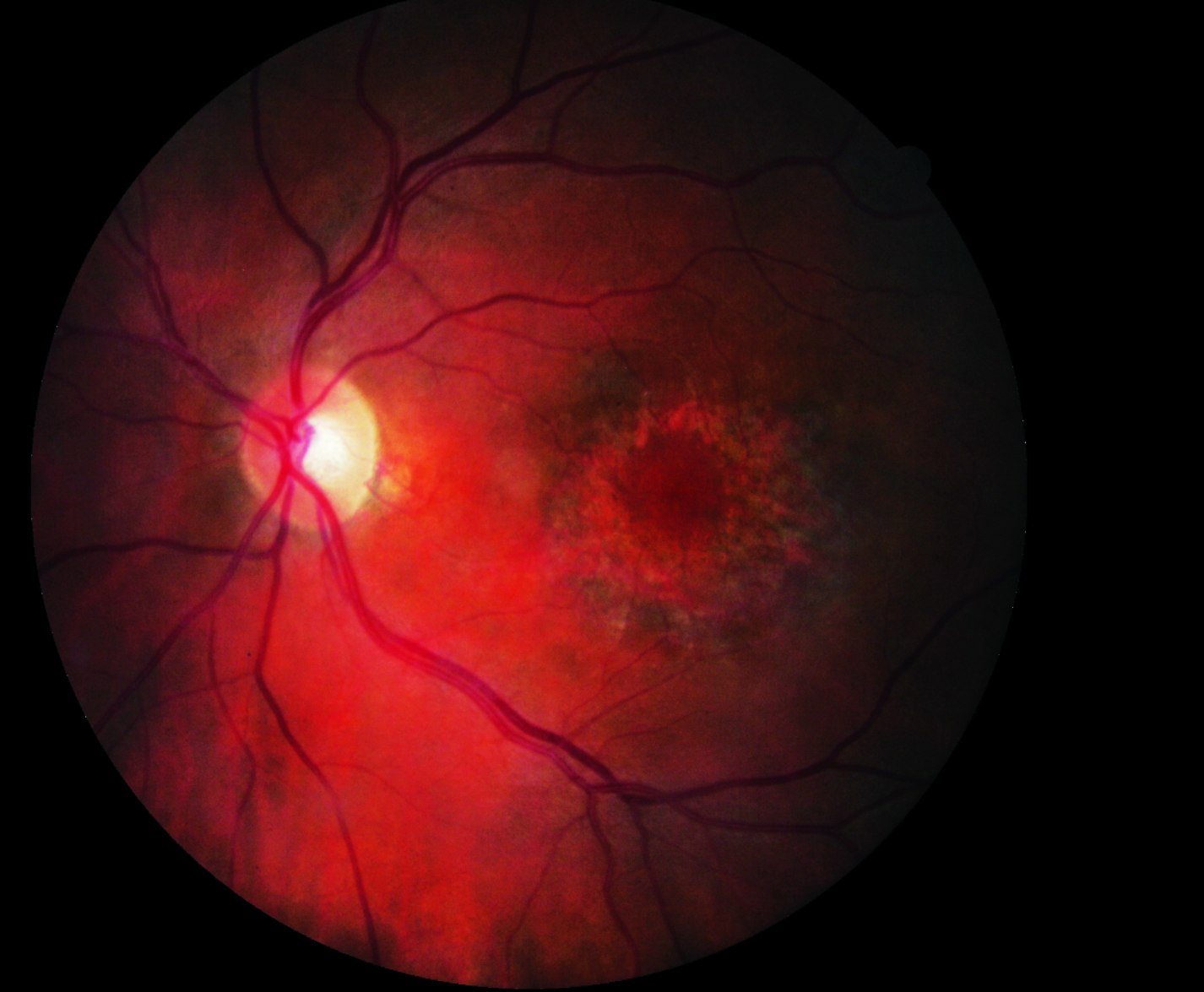 |
|
This recent study identified a novel aspect regarding the association between initial and most recent OCTs with ONL damage in patients who take hydroxychloroquine, revealing thinning in the foveal zone. Photo: Marlon Demeritt, OD. Click image to enlarge. |
Hydroxychloroquine (HCQ), a widely recognized medication for its efficacy in preventing autoimmune diseases such as rheumatoid arthritis and systemic lupus erythematosus, has been extensively studied for its potential side effects. One notable concern is its association with irreversible retinal damage, which leads to both structural and functional progression. There is a gap in research on outer nuclear layer (ONL) thinning in HCQ users without apparent retinal toxicity. This information is crucial for improving screening and identifying the ONL as a reliable biomarker for screening. A recent study published in BMC Ophthalmology investigated the association between HCQ intake and ONL damage in eyes without manifest retinal toxicity. Its results revealed an association between HCQ intake and ONL damage: a reduction in perifoveal, parafoveal and overall ONL thickness among patients taking HCQ in comparison to the control group was found.
The study included 80 eyes of 20 individuals on HCQ and 20 age-matched controls. The data were obtained through chart reviews, and participants underwent comprehensive ophthalmic assessments.
Patients on HCQ exhibited significantly thinner perifoveal, parafoveal and overall ONL compared to controls. Similarly, this association was found in the nasal, inferior and temporal quadrants of both the inner and outer zones, most pronounced in the inferior regions. The cumulative dose was weakly associated with decreased ONL thickness only in the nasal quadrant of the inner zone. Correlation analysis of the initial and most recent OCT scans in the same individuals revealed a weak association with ONL thinning in the central zone.
“Our study used HCQ intake as a discriminator for the risk of HCQ retinopathy, which puts these patients at greater risk of developing this retinopathy. This makes it potentially more valuable for early disease detection in a screening context, which aims to detect the disease earliest before it manifests,” the researchers wrote in their paper.
They suggested that further investigations were needed to establish the potential of ONL thinning as a valuable diagnostic tool for the early detection of HCQ retinopathy and their study underscored the importance of continued research in this domain for the advancement of clinical understanding and the development of effective screening strategies.
| Click here for journal source. |
Salameh N, Doumit CA, Jalkh E, Nehme J. Association between hydroxychloroquine intake and damage to the outer nuclear layer in eyes without manifest retinal toxicity. BMC Ophthalmol. 2024;24(1):414. |

